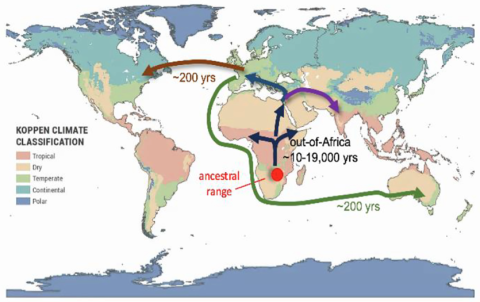
Abstract
Drosophila melanogaster was first used for research in the early 1900's by scientists located in the northeastern corridor of the United States, gaining prominence with the establishment of the famous "fly room" by Thomas Hunt Morgan at Columbia University circa1908. Several reasons for using D. melanogaster in research are well known; easy and inexpensive to breed, short lifespan, amongst others. But why was this insect species flourishing in a temperate northeast region of the New World during the late 1800's when they originated in the tropical forests of sub-Saharan Africa millions of years ago? The purpose of this review is to provide an overview of the experimental underpinnings for a temperature sensitive mechanism that likely contributed to the rather unique ability of Drosophila melanogaster to successfully colonize temperate regions on a global scale. It also furnishes an interesting historical insight into how ancestral genetics serendipitously held the keys to the journey of D. melanogaster becoming such a popular research organism. While numerous papers have been published detailing different aspects of the work, this is the first comprehensive review. Herein, I discuss the discovery of a small thermosensitive intron in D. melanogaster (termed dmpi8) that controls midday siesta levels. Like many day-active animals, Drosophila exhibits a robust genetically based midday siesta that is protective in warm climates. Yet long bouts of daytime inactivity might be counterproductive in temperate climates, especially since daylength in these regions is shorter during the cooler months. Evidence discussed in this review strongly indicates that targeting of dmpi8 splicing efficiency by natural selection enhanced the ability of D. melanogaster to scale daytime sleep levels commensurate with a wide range of local climates. Surprisingly, dmpi8 splicing regulates midday siesta levels in trans by controlling the expression of a nearby anti-siesta gene called daywake. The "fortuitous" genetic arrangement of a thermosensitive intron in proximity to an anti-siesta gene might have contributed to the cosmopolitan nature of D. melanogaster and its historical journey in becoming a popular research organism.
